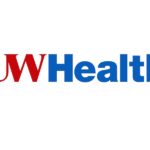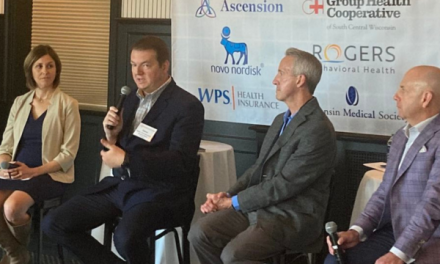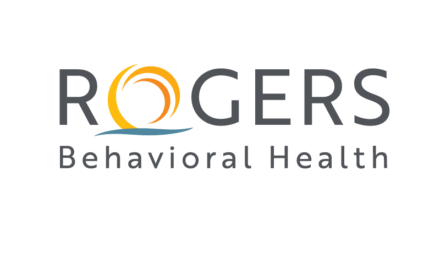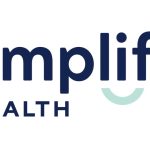
On the Record with Dr. Christine Athmann, Assistant Director of the Native American Center for Health Professions
Seven years ago, there was one Native American studying to become a health professional at the University of Wisconsin School of Medicine and Public Health. Now there are 21, including 13 studying for a doctorate in medicine.
That’s largely due to the efforts of the Native American Center for Health Professions.
Dr. Christine Athmann, assistant director at NACHP and a clinical assistant professor of family medicine, said increasing the diversity of the healthcare workforce can improve patient care. Doctors who share similar backgrounds with can better understand their needs, which can result in better care and outcomes.
“A diverse healthcare workforce brings all perspectives to the healthcare table,” Athmann said. “If we have people from all backgrounds working within the industry, it helps us problem solve and explore why healthcare disparities exist. And it helps us figure out solutions.”
Athmann recently spoke with Wisconsin Health News about NACHP’s work and impact.
WHN: How was NACHP created?
CA: The mission of the Native American Center of Health Professions is to improve the health and wellness of native people. When Dr. Erik Brodt, who is the founder of NACHP, came to campus in 2009, he had family back on some of the northern reservations in Wisconsin. So he was very aware of high health professional turnover rates, the difficulty in recruiting health professionals to native communities, the high disease burden on reservations. When he got to Wisconsin, despite all of those challenges, he didn’t see many native health professionals here. At that time, there was one Native American PA in the whole health sciences at Wisconsin. And there was not any Native American specific health professional programs here at the time. He and I are both graduates of the University of Minnesota. And there was a program at the University of Minnesota called the Center of American Indian and Minority Healththat both of us were pipelined through as undergraduates. They followed us all the way through medical school. So having that experience as a student, he thought, there’s no reason why we can’t set up a similar program here at the University of Wisconsin and graduate health professional students and get them back home to help to improve the health and wellness of our communities.
WHN: What are the challenges Native Americans who are interested in health professions face?
CA: Because there are few Native American health professionals out there, a lot of students and young kids back home at the reservations don’t see this as a possibility for them. There’s no mentors back home, there’s no one to show that you can do this and to support and mentor them into the position to be applying. That’s one of the areas that we focus on. The other thing is that a lot of Native American students come from these smaller high schools. For example, I grew up in a reservation high school in Minnesota. When I got to undergrad, I was challenged because I wasn’t quite prepared in the science field for the academic rigors of being pre-medicine. So sometimes there’s some catch-up happening with these students when they come to the big schools. They’re oftentimes first generation college students, so academia is a very foreign place for them. They don’t have anybody to help them maneuver through all the bureaucratic challenges. There’s not many other native students usually on campus, so there’s less people to identify with and to support each other. There’s very few Native American mentors and advisers and faculty on campus. And so that’s another challenge. They might not have somebody who they can identify at that level and help mentor them through all these challenges. And it can be incredibly culturally isolating to spend your whole life on a reservation and come to academia. It’s a complete culture shock. You’re far from family, you’re far from friends, you’re far from everything you’ve ever known. That can be a huge barrier for students to be successful once they get to college. This is where NACHP has really tried to focus on recruitment and mentorships, setting up a community here on campus so students are supported. They have other people they can call, connect with and have their own native family here on campus.
WHN: What difficulties do you have in reaching them?
CA: The tribes are all over the state. So geographically it can be challenging. It’s a three or four-hour drive for us to meet with our tribal partners. And it can be really hard to try to get to every single middle school or high school to talk to these kids. One of the ways that we’ve tried to get around it is that we have this “We are Healers” website. This is a really beautifully done website that features at this time native physicians who tell their story about how they got into healthcare and why they’re passionate about it, what it’s like to be a native physician. It’s kind of our way of reaching students all over the nation to show them that yes, there are some native doctors out there and you too can do this. And if you are interested in a health professional career, here’s our website, contact us and we’re going to help you in any way we can. It’s been a really successful, beautifully done tool for us.
WHN: NACHP received a $1 million federal grant from Indian Health Services, a division of the Department of Health and Human Services, in 2014. What impact has that had?
CA: At that time, we had established pretty strong relationships with five of the tribes. So we partnered with Stockbridge-Munsee, Oneida, Menominee, Lac du Flambeau and Ho-Chunk. Twice a year we meet with tribal leadership. They come to campus. We have a meeting and update them on what our programming is doing. We get feedback from them on how we can reach students better, activities or events that we could be going to, and to make sure we’re meeting their needs. We also make multiple trips out to the reservation. We go to all 11, but we for sure try to get to our five partner reservations at least three or four times a year. During those visits, we are going to the middle schools and high schools. We’re putting on presentations to the students, showing our “We are Healers” videos. We also are meeting with tribal health leadership at the clinics and are in the process of establishing rotations with many of our tribal partners at their clinics and hospitals so our students can go and be trained within these tribal communities. We just established our first rotation at the Oneida Health Center. One of our students rotated up there this past fall for six weeks. That was really exciting. We’re in the process of developing agreements, for example with Stockbridge-Munsee, to try to get a rotation set up at their tribal clinic too. It’s busy work, but it’s really rewarding work and our tribes have been nothing but supportive and enthusiastic in wanting to engage us and their students. It’s been really successful.
WHN: That grant doesn’t cover nursing. Why doesn’t it and what are you doing to combat that?
CA: The reason the impact grant does not cover nursing is because Indian Health Services has a separate Native Americans in nursing grant. We are in the process of talking with the nursing school about applying for that grant or at least looking at it. We partnered with the School of Nursing already on applying for other grants that are looking at programming to support pre-nursing Native American students here at UW and are looking at increasing recruitment for our native tribes too. There’s definitely a partnership there and we’re working also with various admission committees. This spring, NACHP director Dr. Jacquelynn Arbuckle and I will be presenting to the admissions committee at the nursing school just about cultural competency and cultural relevant things to think about when interviewing native students and that kind of thing.
WHN: What’s next for NACHP?
CA: We’re having diversity issues all over the nation in academia. I think we’re hoping to continue to help the university improve on their diversity here and help them at the admissions level and at the recruitment and retainment level so they can actually see change, which is a big goal. But we hope to continue to help native people have a voice here too and be a liaison between the tribes and the university to improve that relationship and improve that communication. And just to help create a more supportive and welcoming environment so the university can be successful and so that our native students can be successful here too.
Correction: An earlier version of this post misidentified the director of NACHP. Wisconsin Health News regrets the error.





